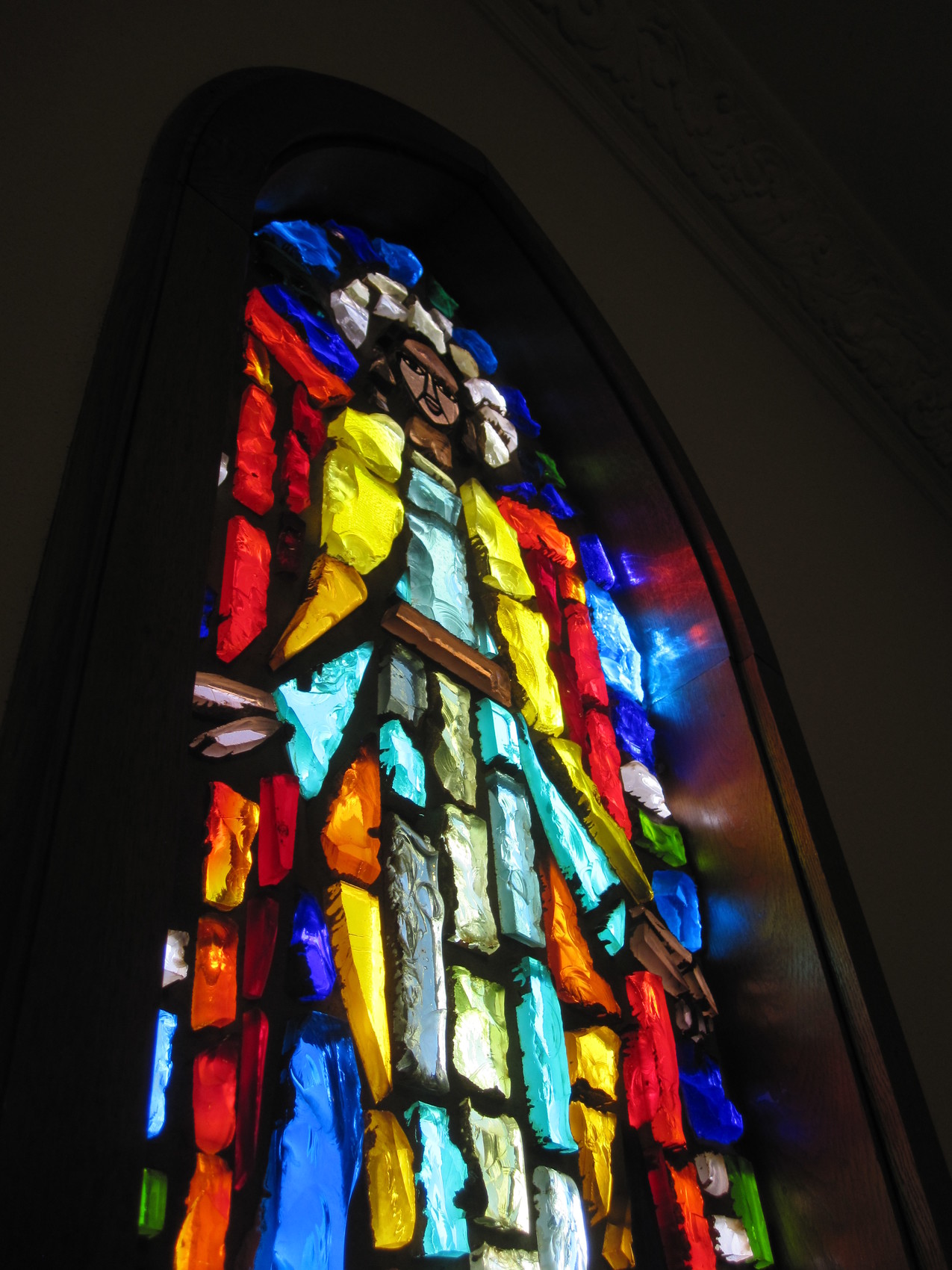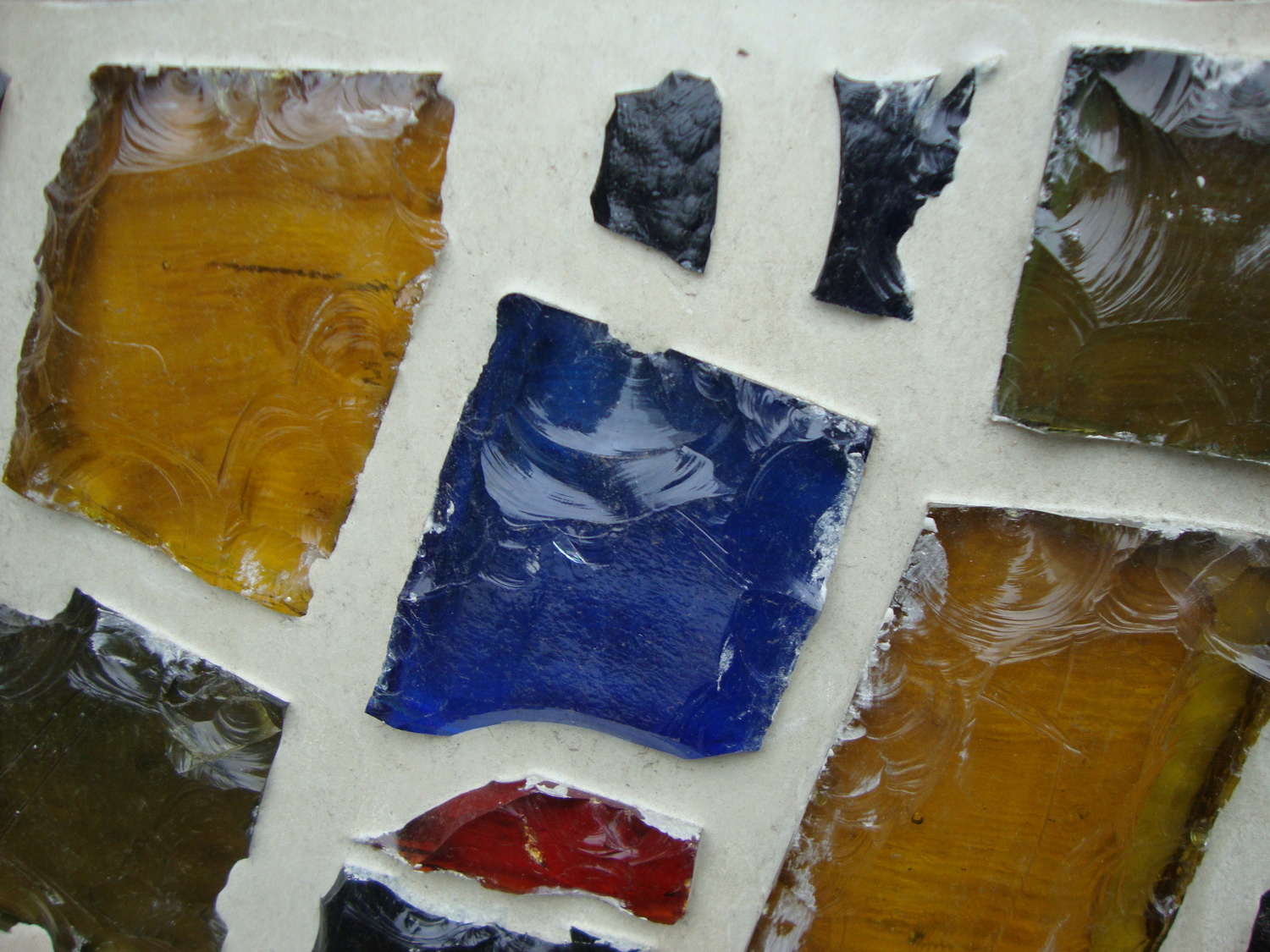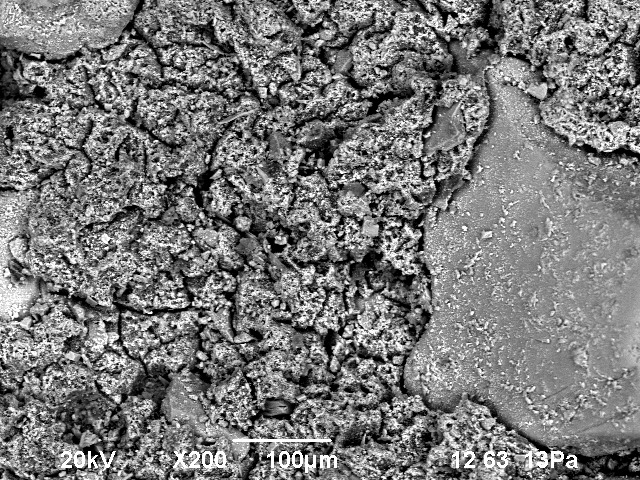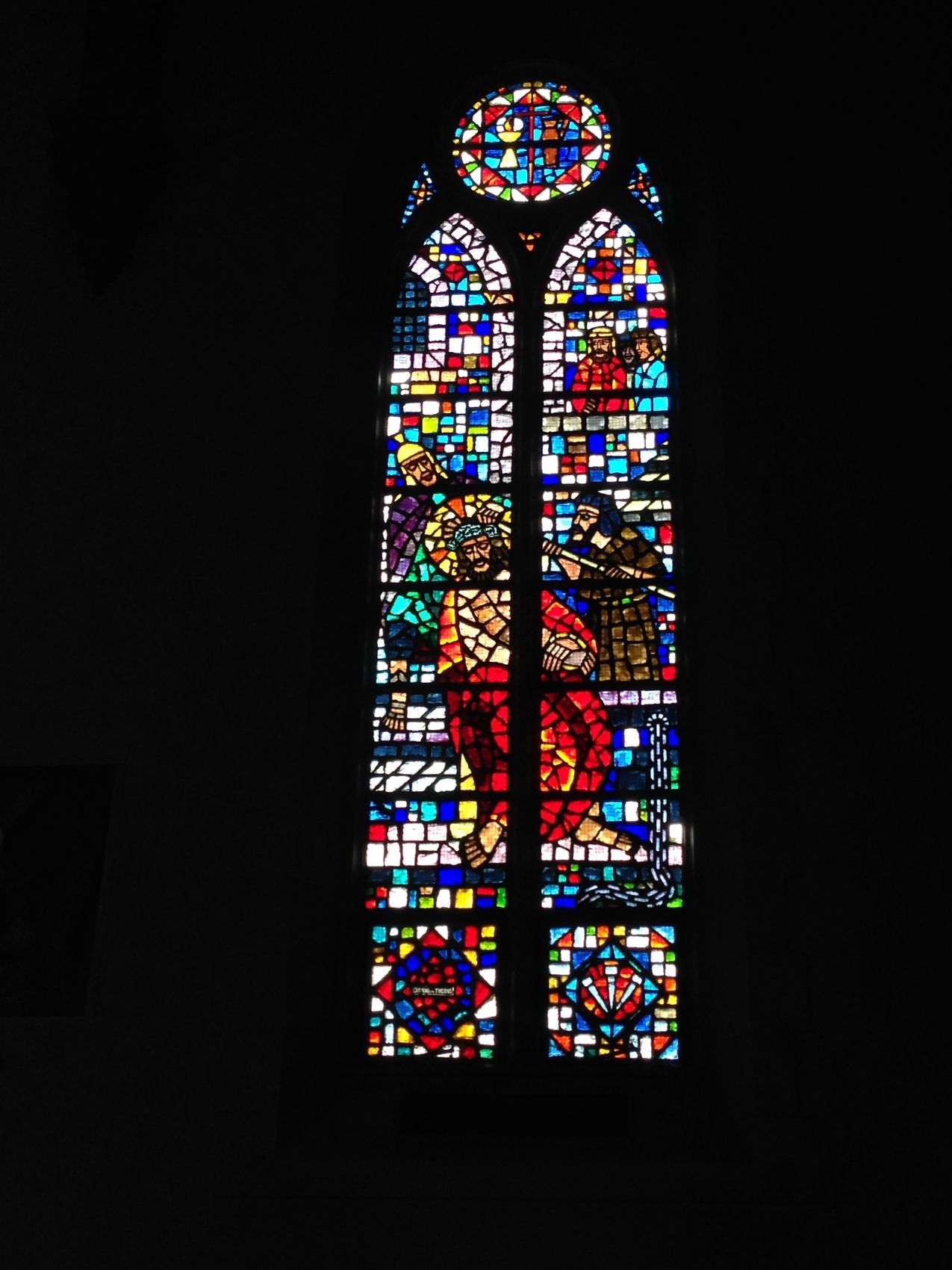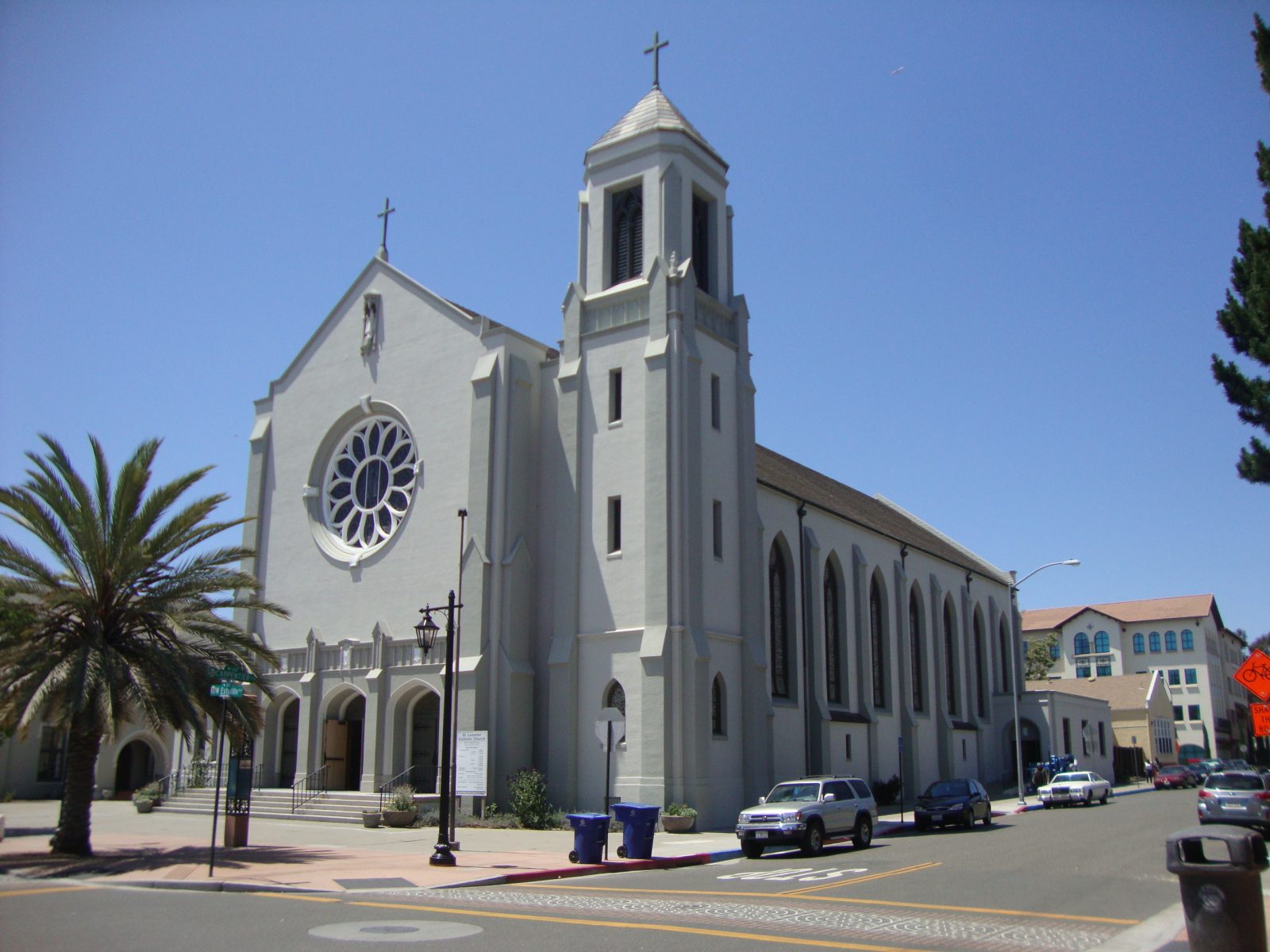San Leandro, CA
Saint Leander Catholic Church
Scope/Solutions
The sixteen stained glass lancet windows at Saint Leander Church were installed in 1966. Local artist, Carl Huneke, constructed the vibrant panels in the Dalle de Verre technique with dalles (faceted glass) set in epoxy mortar. In 2013, SGH investigated the cause of glass pieces falling from the window panels.
SGH conducted a hands-on survey of each lancet window and documented the condition. We noted the frames were generally in good condition, but that some dalles were missing or loose.
We performed laboratory analyses on an extracted window panel; highlights include the following:
- Optical microscopy of the samples to look for surface deterioration and observe the condition of the bond line between the epoxy mortar and glass
- Examined sections for porosity and surface fracturing
- Used Fourier transform infrared spectroscopy to identify mortar constituents and look for degradation
SGH determined environmental factors, such as ultraviolet light, wind, and rain contributed to the deterioration of the epoxy mortar matrix. We also concluded that differential expansion of the mortar and glass caused gaps between the two materials, allowing water and dust into the bond zone, leading to loosening of the dalles under repeated thermal cycles.
Working with the church, SGH developed immediate protection and long-term stabilization and preservation concepts. For short-term protection, we recommended interior and exterior netting over the windows to contain any falling pieces. We also tested long-term repair options on a sample panel in our laboratory to evaluate methods for stabilizing dislodged dalles and cracked mortar, and for reinforcing the panel.
Project Summary
Key team members

